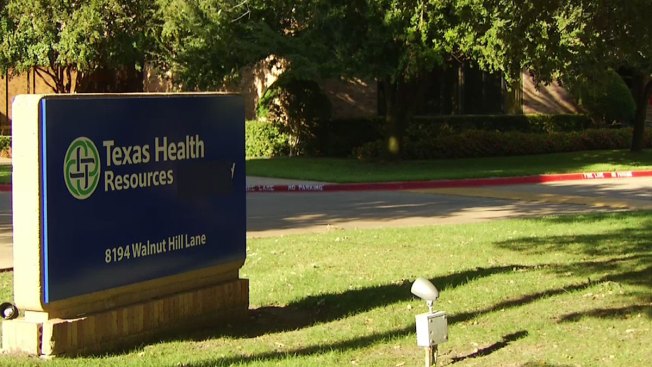https://www.healthcaredive.com/news/hospitals-look-to-venture-capital-as-rd-extension/549854/

Academic and nonprofit hospitals are increasingly embracing venture capital as a way to test new technologies, a shift away from the traditional reliance on developing in-house intellectual property.
Since their founding days, providers like Mayo Clinic and Cleveland Clinic have leaned heavily on investing in IP to test new products and services. More recently, players like Tenet, Trinity and Community Health Systems have become comfortable investing in externally-run funds. Now, hospitals of all sizes, types and tax status are giving corporate venture capital funds, where they invest directly in companies, a go.
Hospital fund managers perceive the financial risk in the same light they see other investments, except venture capital can offer hospitals more flexibility. It’s how health systems like Intermountain think of R&D.
Mike Phillips, managing director of Intermountain Ventures, told Healthcare Dive venture funds offer hospitals a chance to “double dip.” If an investment is successful, the outcomes are positive both clinically and financially.
Most don’t take the lead on investments, preferring to take a minority stake. Hospitals see venture as a way to bring in and test out new technologies.
“If they (the startup) can get a champion in the organization that really helps refine it, improve it, augment it, that is much more valuable than the money,” Mary Jo Potter, an investor and consultant in the field, told Healthcare Dive.
Potter cautioned against expecting too much too soon. It typically takes take 10 years to get an exit and even then, returns are most likely to be in the range of twice or triple the investment. Well over half of the health system-linked venture funds are less the five years old, Potter said.
UPMC Enterprises, the venture capital arm of University of Pittsburgh Medical Center, made $243 million when its population health management spinout Evolent Health went public in 2015, according to UPMC Treasurer Tal Heppenstall, and the nonprofit still retains stock.
Heppenstall, who also leads UPMC Enterprises as president, told Healthcare Dive the health system plans on spinning out two companies by the middle of this year. That would bring its count to five as part of its “renewed focus on the translational science space” — finding business applications for medical research.
In February, the fund participated in a $15 million investment in data analytics company Health Catalyst. UPMC will pilot Health Catalyst’s products in-house.
Early entrants
Ascension seeded its first venture fund with $125 million in 1999, making its first investment ($8.4 million in radiation system TomoTherapy) two years later. Eventually, Ascension decided to bring in limited partners to help close the fund.
Ascension Ventures now currently manages $805 million across four funds.
Kaiser Permanente Ventures is an active investor in its own right. The venture arm of the hospital system manages $400 million in assets over four funds, with 28 exits, according to CB Insights.
Early adoption of CVC by health systems like Ascension and Kaiser paved the way for health systems that want to give venture a try, but want to start slow as limited partners. In recent years, deal flow is ramping up at a healthy clip.
Deals involving at least one provider-backed venture fund totaled nearly $1.3 billion in 2018, according to PitchBook, an all-time high — and on track with overall corporate venture capital participation in the healthcare sector, which CB Insights reports having jumped 51% to $10.9 billion last year.
Newly-seeded funds are springing up in health systems across the country. Providence St. Joseph Health, one of the largest health systems in the country and most active in the venture space, announced its second $150 million healthcare venture capital fund in January, managed by its venture arm Providence Ventures. Providence Ventures’ first fund was launched in 2014.
Starting small
Like many smaller health systems establishing themselves as new players in venture capital, Intermountain made its foray into the space as a limited partner in larger funds managed by Heritage Group and Ascension.
Large firms “have a lot of understanding in how to help manage young companies and get them through the business end of growing their company. We can help on the clinical end,” Phillips said. “We definitely rely on the other folks investing … to both learn from and be a good partner to the companies we invest in.”
Intermountain formally launched its first $80 million venture fund this year.
While the health system recognizes the risk, Phillips argued many hospitals have institutional knowledge most investors don’t. That, in theory, allows them to mitigate some of that risk.
Intermountain’s portfolio is comprised partially of the companies the hospital system spun out of R&D. That’s not uncommon for nonprofit and academic health systems that have traditionally focused on developing IP in-house. As of 2017, 90% of Cleveland Clinic Ventures’ portfolio was invested in IP owned by the health system.
IP is the bread and butter investment for most academic and nonprofit health systems, helping to bring in some return while allowing physicians, who often develop those patents themselves, to retain some benefit.
Mayo Clinic, for example, says it has generated $600 million in revenue from licensing its IP since 1986. The health system has recently rolled its venture activity into its R&D arm under the name Mayo Clinic Ventures. Nevro, a device company the system spun out in 2014, has a current market cap of $1.32 billion.
Hospital executives like to say CVC is a complementary tool to R&D, that it’s another way to tinker — that the money doesn’t matter as much as the ability to improve quality and decrease cost does. That may be true, but at the end of the day it’s an investment, and hospitals have to hope it yields a positive return.
If there’s a chance an investment can lower the cost of care, increase quality and improve clinical care, Phillips said, the bigger risk is not giving it a shot.













